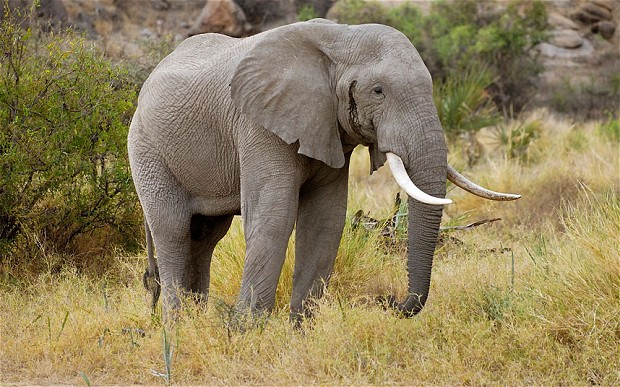On December 26, 2004, a 9.1 undersea earthquake erupted in the Indian Ocean. It triggered a massive tsunami that slammed into the coastlines of eleven Indian Ocean countries. Nearly 250,000 people died. Yet, in Sri Lanka’s Yala National Park, the largest wildlife reserve, there wasn’t a single report about dead animals. According to the deputy director of the National Wildlife Department, elephants, wild boar, monkeys, jackals, and deer moved inland to avoid the killer waves.
Khao Lak on Thailand’s western coast was hit particularly hard by the tsunami. But hours before it struck, elephants trumpeted and an hour before the tsunami crashed to shore with waves more than thirty feet high, the elephants became agitated again and took off for higher ground.
Along India’s Cuddalore coast, where thousands of people died, the Indo-Asian News service reported that buffaloes, goats, and dogs were found unharmed.
The indigenous tribes of the Andaman and Nicobar Islands, which lie near the quake’s epicenter, noticed the unusual behavior of dolphins, birds, and lizards and retreated to higher ground. The tribes survived without a single fatality.
Even though premonitions in animals have been well-documented over the years, mainstream science is slow to accept that it happens and typically offers alternate explanations. That was the case in 2004, when Florida was hit by four hurricanes in rapid succession —Frances, Charlie, Ivan, and Jeanne.
Birds delayed their migration during these tumultuous weeks. When Hurricane Jeanne was still hours away from Gainesville, University of Florida biologist Thomas Emmel noticed that the butterflies in the university’s enclosed rainforest took shelter among rocks and trees. When Hurricane Charlie was within twelve hours of southwest Florida, scientists at the Mote Marine Laboratory in Sarasota, Florida, noted the odd behavior among ten tiger sharks they had tagged. Eight of them fled the estuary for the safety of the open ocean.
In 1992, Hurricane Andrew slammed into Homestead, Florida, and nearly wiped it off the map. In its path was the habitat of crocodiles that live in the cooling canals of the Turkey Point nuclear power plant. Not a single dead crocodile was found in the aftermath of the storm. It’s speculated that they fled into open water or to the bottom of the twenty-foot canals.
“It doesn’t make any difference if it’s a hurricane, a fire, or an earthquake,” said Frank Mazzotti, a wildlife biologist at the University of Florida. “They start moving away from danger before humans pick it up. It’s likely a combination of smell, vibrations, and pressure.”
But suppose it’s simpler than that? Suppose animals are natural precogs?
For hundreds of years, the Chinese and Japanese have used unusual animal behavior as part of their national earthquake warning system. It paid off big time in February 1975, when a 7.3 quake struck Haicheng, China and most of the city’s structures. A week before, residents had noticed abnormal behavior in animals – snakes came out of hibernation and into the snow, dogs acted restless and anxious and howled without apparent reason. Small animals deserted the city. In the first three days in February, the bizarre behavior intensified with cows, horses, and pigs. Based on nothing more than the observations of the erratic behavior of animals, officials evacuated the city and more than 90,000 lives were saved when the quake struck on February 4.
But as British biologist Rupert Sheldrake points out in his book, Dogs That Know When Their Owners Are Coming Home, the Chinese have also had “some spectacular failures,” like the 1976 Tanghan quake, in which 240,000 people died. Overall, though, Sheldrake believes the Chinese “ have been remarkably successful in predicting earthquakes – in contrast to their Western counterparts, who do not even try.”
If you live in a Western country, can you imagine the officials in your area issuing an evacuation order based on nothing more than the erratic behaviors of the animals? Can you even visualize your CNN or NBC affiliate explaining why such an order was issued? Probably not.
The official stance of the U.S. Geological Survey – USGS – is that there isn’t any reliable technique for predicting quakes, not even strange animal behavior. As stated on USGS website: “Because of their finely tuned senses, animals can often feel the earthquake at its earliest stages before the humans around it can. This feeds the myth that the animal knew the earthquake was coming. But animals also change their behavior for many reasons, and given that an earthquake can shake millions of people, it is likely that a few of their pets will, by chance, be acting strangely before an earthquake.”
James Berkland, a retired USGS geologist in California, however, has a different opinion. According to his research, the number of missing dogs and cats increases significantly two weeks before a quake. The gravitational variations due to lunar cycles create “seismic windows” of greater quake probability. When the number of missing pets also rises, then a quake is likely. As a result, Berkland claims to be able to predict quakes with an accuracy greater than seventy-five percent just by counting the number of ads for lost pets in the daily newspaper, by mass beachings of whales and dolphins, and by correlating these events to lunar-tide cycles.
What about fish? Are they able to sense future quakes, too? In Japanese mythology and folklore, the oarfish is one predictor.
This bizarre-looking creature, though to be the world’s longest bony fish, can measure from twenty to fifty feet in length and lives at depths of several hundred feet. According to the Japanese Times, it’s known in mythology as ryugu no tsukai or messenger from the sea god’s palace. When they come to the beach, it’s an omen of an earthquake.
In March 2010, around the time of the 8.8 quake that struck Chile, Japanese fisherman discovered dozens of oarfish. Not long before the 2011 quake and tsunami in Japan, twenty oarfish stranded themselves on beaches in the area.
Coincidence? Yeah, sure.
According to an article in China Daily, the Chinese also believe that fish can sense future quakes. In July 2015, China Daily reported the seismological bureau in Nanjing has transformed seven animal farms into seismic stations, where the behavior of fish, chickens, and black boars will be monitored for unusual behavior. According to Shen Zhijun, keeper at the Hongshan Forest Zoo in Nanjing, these particular animals are sensitive to infrasound All these animals are sensitive to infrasound but not to other changes in environment or weather.
Cameras to monitor the animal behaviors will be set up across the park, which is home to 200 black boars, 2,000 chickens, and a 36-acre fish pond. Zhou Hongbing, a breeder turned earthquake observer at one of the refurbished animal farms, said that breeders and observers have to brief the bureau in Nanjing twice a day about the animal behaviors. When they observe erratic behaviors, they notify the bureau immediately, through QQ, a Chinese instant messaging software.
“Seismological experts will analyze reported abnormalities to decide whether or not a possible earthquake is imminent,” said Zhou.
Special training at the bureau lists possible abnormal behaviors as chickens flying above trees instead of eating, a large number of fish jumping out of the water, or numerous toads moving home. Zhou Bing, division chief with Nanjing seismological bureau, says that possible animal farms must house more than three species and have a pond that covers dozens of acres, so that the experts have enough samples to do cross checks. Preferred locations should be in quiet neighborhoods away from factories or mines.
The article notes that since the 1970s, 58 kinds of animals have been found that exhibit abnormal behavior before earthquakes. These include wild and domesticated animals such as cats, dogs, pandas, fish, snakes, rats, skunks, ants and bees. Cave animals like rats and snakes, have been found to be more sensitive than those living above the ground, and smaller animals are more sensitive than their larger counterparts.
The Chinese will combine the observation of bizarre animal behaviors with more traditional means of predicting quakes. But, clearly, they are leagues ahead of the West in this area.










I feel major earthquakes 3 days before & a minor one here in UK 3 days before too. Animals are very in tune with earths frequencies , I think it’s great the Chinese monitor their behaviour asa predictive tool !
I am so closely linked to my dog that once when she was out with someone else and hurt herself I actually felt it and sent healing to her. She had hit a post with her shoulder running at 30 miles an hour & was in great pain and had to be carried a while but within ten minutes was walking normally without a limp! She returned home recovered.
Is your dog a border collie? 30 mph sounds about right for a border collie! Love the story, Jane.
Research was being done on /at Harbin Springs ( devastated by fire this year ) on how when there is tetonic activity there is also magnetic fluxations. Most earth movement creates some sort of magnetic fluctuation. Here goes my theory: when major weather/ earth /solar activity occurs, look to magnetic changes first.
Also, elepahants have the abitlity to “hear” subsonic frequencies, as noted by mating calls of males during rut. So i would suppose they also “hear ” earth changes , feel magnetic disruptions, as would birds and other animals / insects.
We are told that we are chemical first, i would add a parallel corollary to that we are also magnetic first at the same time. Or, we or rather our minds, which is not connected physically to our bodies, perceives at greater vibrations / frequencies too.
Well, enough from me
Be well
Laurence
p.s. I could be wrong….
I agree that we are also “magnetic.” I need to Google Harbin Springs. Not familiar with it.
Trish,
Here you go, this is how i found out.
https://shaktitechnology.com/mob.earthfee.htm
Scroll down to the earthquake part
My discovery of thisplace also co-incides with a bunch of weird events that took place while i was living outside of Sedona. Almost all of my remote viewing, hemi sync, harbin springs, shakti helmet interest started at the same time in 2000-2001. My OBE, intuition, paranormal events have been with me since birth, but they for the most part have been non directed experiences.
More on the road to Monroe Mountain some other time. It is a long path that still needs to be completed.
Be well,
Laurence
Thanks, Laurence! You should be working at the Monroe Institute, you know. Do you get their newsletter? It’s where they post job listings…
Trish,
Thanks and yes i have been on their newsletter, mailing lists for nearly 15 years it seems, still a dreamer i guess.
Be well
Laurence
Animals = Planetary Empaths………….
Definitely!